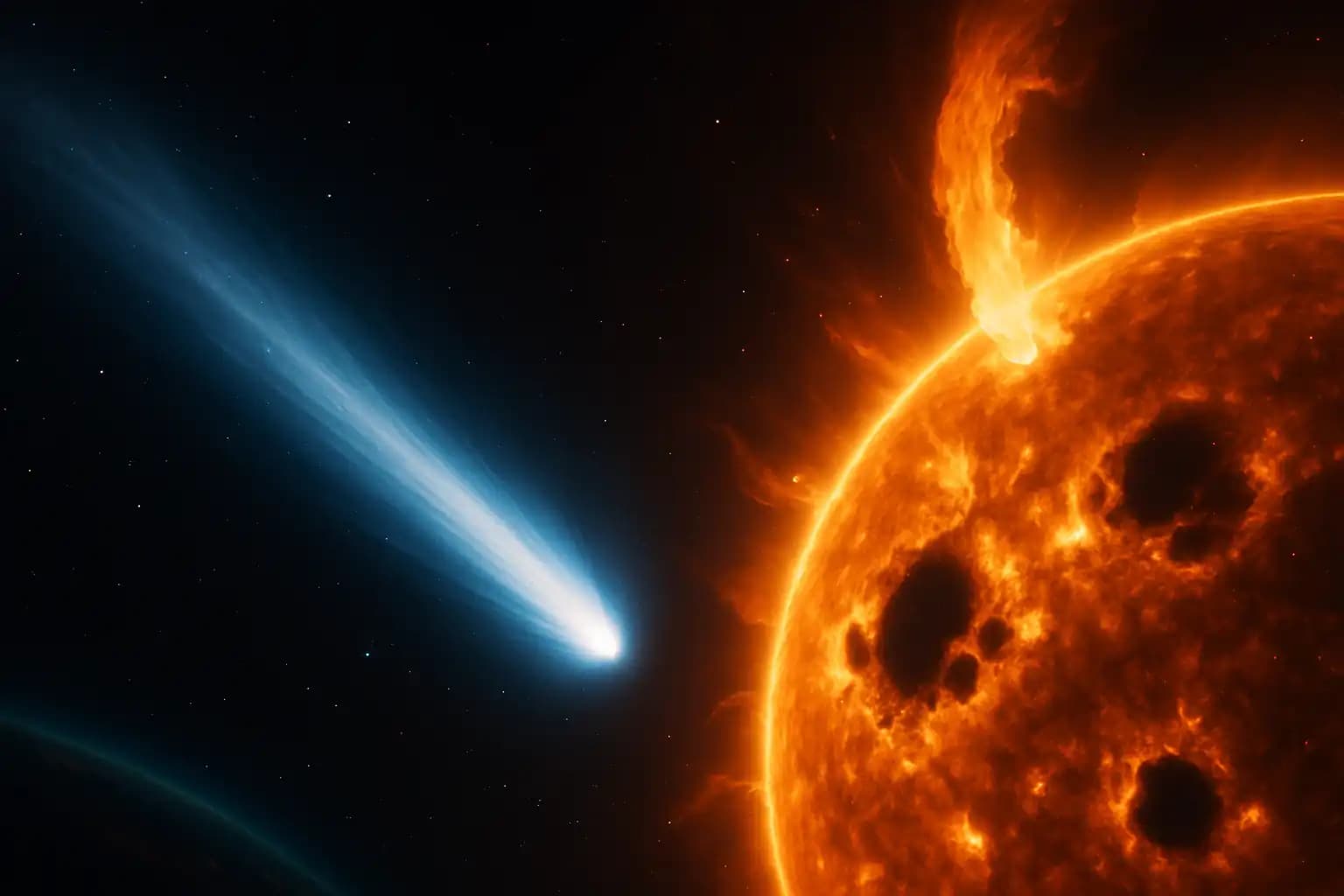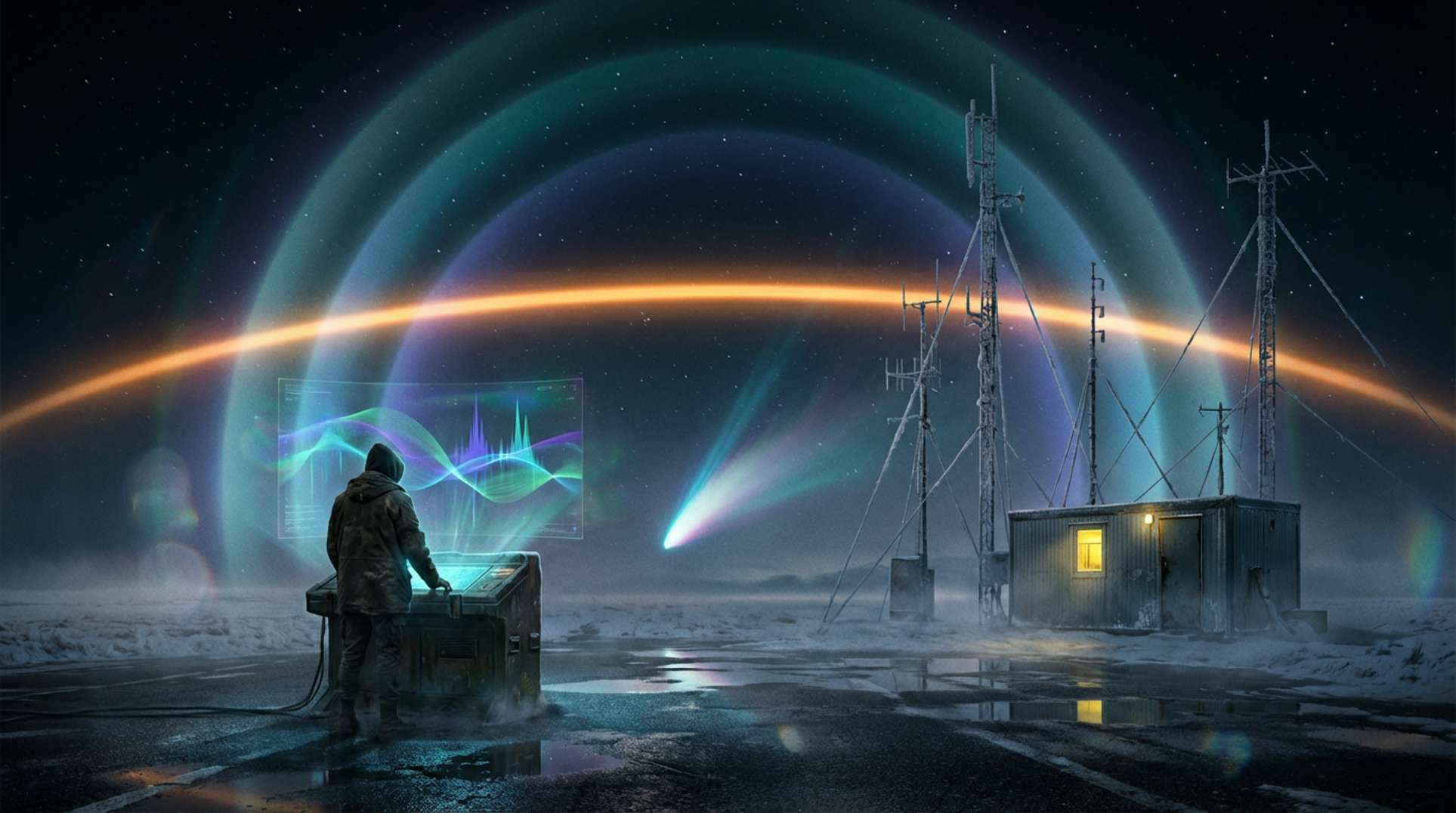As astronomers began their routine observation cycle, interstellar comet 3I/ATLAS surprised them with dramatic brightness. This burst exceeded anything recorded from recent interstellar objects. Now, as the comet exits its solar blind spot and sunspot groups reactivate, 2025 promises to test astrophysical cause and effect—and shows that cosmic events can resonate beyond headlines (Chron).
3I/ATLAS: Rapid Brightening and Rare Interstellar Chemistry
NASA and international teams have observed 3I/ATLAS brightening faster than expected as it approached its October 29 perihelion. Recent reports indicate that the comet’s surge in brightness, surpassing Oort Cloud comets, caught scientists off guard. New findings highlight its bluer-than-Sun hue, substantial gas outgassing, and a nucleus larger than previous interstellar visitors. The galactic alignment context and the comet’s unique chemistry intrigue experts in planetary defense and solar system formation.
3I/ATLAS poses no threat to Earth, passing no closer than 1.8 AU. Yet, its glow offers valuable insights into chemistry from distant star systems. Researchers and the public can monitor its path and scientific impact through features such as this investigative update and ongoing scientific records.
Solar Superactivity: Sunspot Growth and Space Weather Threats
As 3I/ATLAS reached perihelion, the Sun entered a phase of intense volatility. By the end of October 2025, explosive sunspot growth occurred on the Sun’s far side, now rotating toward Earth. According to EarthSky, these sunspots have produced massive flares and swift coronal holes, with geomagnetic storms elevating the Kp index to G1 and G2 (minor to moderate) levels. NOAA’s Space Weather Prediction Center confirms this activity represents one of the strongest intervals since Solar Cycle 25 began. As auroras appear at new latitudes, analysts brace for potential satellite, radio, and grid disruptions.
This narrative weaves through the solar cycle’s ascent, evident in long-term datasets and the expectations highlighted in this resonance check of disaster cycles.
Geomagnetic Storms: Tech Disruption and Historical Precedent
Major geomagnetic storms, triggered by solar flares and coronal mass ejections, can disrupt modern life unpredictably. As EarthSky explains, currents over 100 amperes can flow through electrical grids, damaging transformers and causing blackouts. The May 2024 G5 storm, the worst in two decades, knocked out Quebec’s grid and disrupted GPS systems vital for various activities. Lesser storms also threaten satellites, pipelines, and undersea cables. This risk echoes in tech breakdown case studies and influences national preparedness plans worldwide.
Grasping these risks extends beyond academia. Explore how science intersects with civil contingency planning in emergency broadcast investigations.
What’s Next: Monitoring, Modeling, and Real-World Consequences
With 3I/ATLAS fading from the Sun and powerful sunspot groups becoming visible, scientists and grid operators prepare for upcoming challenges. The intersection of interstellar comet science and solar activity presents unique opportunities—both for planetary defense planning and assessing our digital systems’ resilience. Understanding a geomagnetic storm involves recognizing not only auroras but also the hazards to infrastructure and national security.
Whether tracking satellite alerts, enjoying auroras, or planning contingency measures, this story offers vital lessons on planetary vulnerability and cosmic wonder. For comprehensive analyses ranging from solar physics to scenario planning, set your alerts with Unexplained.co.





